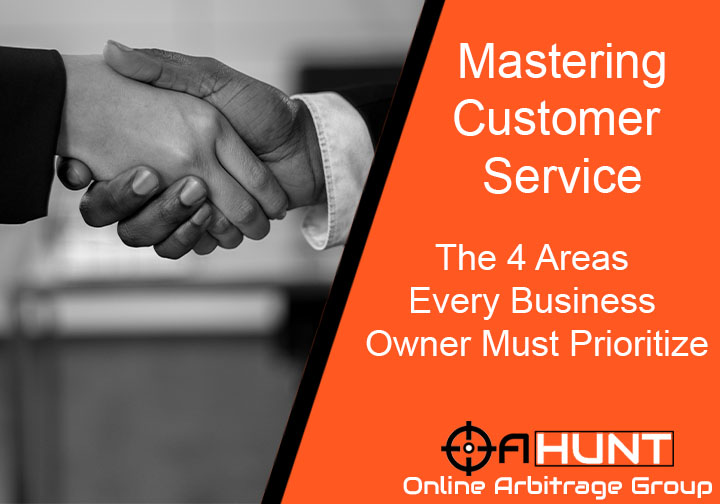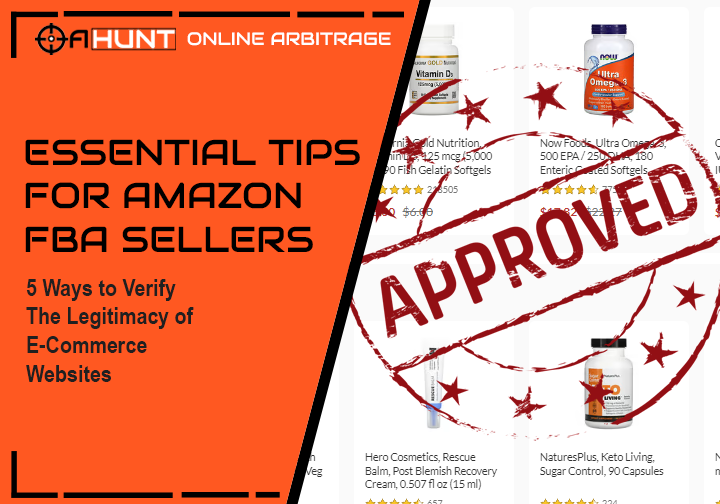Let's discuss systems. The goal with an FBA business is not to spend 12 hours behind your computer, prepping your shipments, repricing your inventory, etc... right? We want to make your Amazon business a lean mean cash machine that only requires regular checkups and preventative maintenance to keep it running. In this article, we'll discuss how to identify the processes you should outsource or systemize first, how to build that system, and how to keep it running once it's in place.
What Is A System?
A system is a process or set of rules to streamline work and make it more efficient. In business, automation and process improvement are key to success and scaling. By building systems that eliminate yourself from the equation, you can free up time and resources to focus on other areas of your business. To me, systems are an addiction. Once I began to understand how to build them it become something I developed a strong passion for...I enjoy building systems for my business!
Systems don't have to be what you think of traditionally like "computers and expensive management software". A system can be as simple as waking up, making your bed, brushing your teeth, and reading the news. This is a habit-based system but a system nonetheless.
In business, a simple system can be checking and responding to emails as soon as you get to the office. This can even be a system that YOU don't have to do!
Types of Systems
There are several types of systems you can build to improve the quality of life in your work. A few common types of systems that may be useful to you in your Amazon business are:
- Product research (product leads, private-label research, keyword research)
- Financial Systems (repricing, bookkeeping)
- Administrative Systems (employee managing, payroll)
- Customer Service/Support Systems (returns, customer support)
- Operational Systems (day to day operations, product ordering, listing creation)
- Marketing Systems (PPC advertising, funnels)
Building A System
Now that we know what a system is and some common types of systems, let's talk about how to build one. The first step is identifying which processes you need to automate, systematize, or outsource. This will be different for every business, but here are some general guidelines:
- Any task that is repetitive or time-consuming should be automated or outsourced.
- Any task that requires knowledge or skills that can be taught could be outsourced.
- Tasks that don't add any monetary value to your business *cough* prep work *cough*
- Any task that you just don't enjoy doing! (this one's my favorite)
There are endless possibilities for what you can outsource or systematize in your business. Once you've identified the processes you want to build a system for, it's time to start creating!
To build an effective system, you'll need these three things:
- A detailed process map that outlines each step of the task from start to finish
- A set of instructions or training materials for the person who will be doing the task OR a detailed instruction and criteria for finding a software/developer to build what you need
- A method of tracking progress and measuring results
Creating a process map is relatively simple. You can use a program like Google Docs or Microsoft Word to create a document that outlines each step of the task. You'll want to do the process that you're trying to systematize while you build this map.
Next, you'll want to determine whether the system you're going to be done by people or a computer. I suggest doing some financial research into this step before making any investments. Processes and systems done by a computer or program can take longer to develop and cost more upfront but are more likely to cost less in the long run. Some things simply can't be done without the human touch though and that's often just as or more effective anyway. Once you know how to proceed you can begin making the training materials, standard operating procedures (SOP's), or finding the right software/developer to build what you need.
*If you've determined you want to add outsourcing as part of your system you should read my article on hiring your first Virtual Assistant (VA) here*
Outsourcing to create your system
I've found that in my Amazon business, doing screen recording or zoom sessions to train VA's is just as useful as building an SOP. This can be determined by how in-depth the process is and how well the VA understands the task(s). If you will have several people doing the tasks it is probably better to build a step-by-step SOP so that there will be no reason for them to stray from the standard. This helps create predictable outcomes every single time.
Developing to create your system
Sometimes a system is most useful to you as something like software or a program. Maybe there's already a program out there that you can take advantage of though. For example, repricing your Amazon inventory. There are several different companies and software that do this for you so there's no need to have something developed just for you. Talk to other sellers about what problem you are looking to solve and you will be surprised what information others are willing to share.
If there's nothing already made that can help you, you can have a software or program custom-made for you. Having a program built can take a long time and cost more upfront but when it's done right it'll be well worth it. I've had automation systems built for my business that took my hands-on working time from a few hours a day down to just an hour or less per week. If you're looking to have something custom made, you may want to start with a freelancer from a site like upwork.com or fiverr.com
Measuring Success
After the system is built, you'll want to track progress and measure results. This helps you determine if the system is working or needs to be tweaked in some way. Trust me- don't expect the system to be hands off from the get-go!
To measure success there are several different ways but I recommend using a simple spreadsheet that you update daily or weekly. This type of spreadsheet can also be shared with a team member so that tracking the output of your system can even be systematized. Build the spreadsheet with a way to track how many issues have developed since the system was put in place, how long the issue lasted, what the fix was, and so on.
Example 1: you hired a VA to manage your pay-per-click (PPC) advertising campaign. Before you built this system you were spending $100 a month and making $500 in sales. After you implemented the system, you are now spending $500 a month and making $5000 in sales. Your return on investment (ROI) went from 400% to 900%. System success!
Example 2: you were prepping and packing 500 units of product every week to send to Amazon. This took you about 8 hours per week. You hired a prep center to take this workload over and you spent those 8 hours sourcing and buying online arbitrage products (to learn more about what online arbitrage is read our article: What's Online Arbitrage? The Art of making money on Amazon in 2022). While your average cost per item bought went UP because of the $1 prep charge, you were able to source an additional 300 units at an average profit of $3 each, every week! Earning you an additional $400 of profit every week. Another system success!
Why are systems so important?
Building business systems can save you time and money while helping you to scale your business. It's important to take the time to do it right so that you can reap the benefits for years to come. The true benefit comes when you build systems that eliminate yourself! As a business owner or manager, your goal should be to build systems that eliminate yourself from the equation. That means creating processes that can be run by someone or something else with minimal supervision. This will free up your time so that you can focus on more important things, like growing the business.
To hear some thoughts on business systems on YouTube please watch the video below!





Leave Comment Here
(Your email will not be shared with your comment)